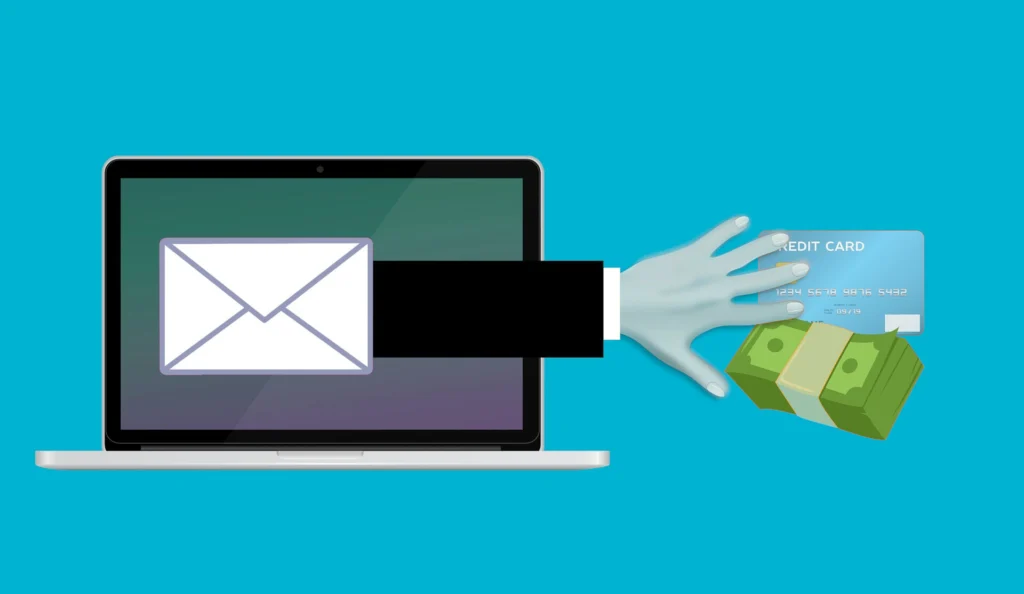Email scams are one of the oldest tricks in the cybercriminal’s book—but they’re still around because they work. Whether you’re a casual internet user or a professional, recognizing scam emails is key to protecting your personal and financial information.
Here are 10 warning signs that an email might be a scam:
1. 📧 The Sender’s Email Address Looks Suspicious
Scammers often use fake email addresses that closely resemble real ones to trick you. A common tactic is swapping letters with similar-looking numbers. For example, they might use [email protected] instead of the real [email protected]—replacing the letter “l” with the number “1.” These fake addresses are hard to spot at a glance but are designed to deceive. Always double-check for subtle misspellings, extra characters, or strange domain names. If something feels off, don’t click links or provide personal information. Stay alert and protect yourself from phishing scams and email fraud.
2. 🚨 Urgent or Threatening Language
Scammers often use urgent or threatening messages to pressure you into acting fast without thinking. You might see phrases like “Your account will be suspended!” or “Act now or lose access!” These messages are designed to create panic and make you click dangerous links or give away personal information. Legitimate companies don’t use fear tactics. Always pause and verify the source before responding. Don’t let urgency trick you—take a moment to think clearly, check the sender, and avoid falling for scams that rely on fear and quick reactions.
3. 💰 Too Good to Be True Offers
Be cautious of emails claiming you’ve won a prize, inheritance, or gift card—especially if you never entered a contest. Scammers love to lure victims with exciting offers like “You’ve won $1,000!” or “Claim your free gift now!” These messages are designed to grab your attention and get you to click without thinking. In reality, they often lead to phishing websites or malware. If something sounds too good to be true, it probably is. Always verify the source, avoid clicking unknown links, and never share personal information with untrusted senders. Stay smart and stay safe!
4. 🔗 Suspicious Links
Scammers often hide dangerous links behind innocent-looking text. Before clicking any link in an email, hover your mouse over it to see the real URL preview. If the link doesn’t match the text or leads to a strange or unfamiliar domain, don’t click it. It could take you to a fake website designed to steal your personal information or infect your device with malware. Trust your instincts—if something feels off, it probably is. Always verify the sender and the destination before engaging with any links. A few seconds of caution can save you from a serious scam.
5. 🧾 Unexpected Attachments
Be extremely cautious with email attachments, especially if they come from unknown or unexpected senders. These files may look harmless but can contain malware, ransomware, or viruses that steal your data, damage your system, or even lock you out of your computer. Scammers often disguise malicious files as invoices, receipts, or urgent documents. If you weren’t expecting an attachment—or if something feels suspicious—don’t open or download it. Always verify the sender and scan attachments with trusted antivirus software. It’s better to be safe than sorry when dealing with unknown email files.
6. 👤 Asking for Personal or Financial Info
Legitimate companies will never ask for sensitive information—like passwords, credit card numbers, or Social Security details—via email. If you receive a message requesting this kind of data, it’s almost certainly a scam. Scammers pose as trusted brands to trick you into giving up private information, often using urgent or official-sounding language. Remember: banks, government agencies, and major services won’t ask for this over email. Never reply, click, or fill out forms in suspicious messages. When in doubt, contact the company directly through their official website. Protect your info and stay alert!

7. 📝 Poor Grammar and Spelling Mistakes
One of the easiest ways to spot a scam email is by checking its grammar and spelling. Many scam messages are filled with misspelled words, awkward phrasing, and strange sentence structures. Legitimate companies take time to craft clear, professional communication—scammers usually don’t. If an email sounds off or looks sloppy, that’s a red flag. Don’t ignore the small details. Spelling errors or unusual language can signal that the email is coming from a fake or untrustworthy source. Always pause, read carefully, and verify before clicking or responding. A little caution can go a long way.
8. 🏢 Generic Greetings
Be cautious of emails that begin with vague salutations like “Dear Customer” or “Dear User.” Legitimate companies usually address you by your real name—especially if you have an account with them. Scammers send out mass emails hoping to catch someone off guard, and generic greetings are a red flag that the email may not be genuine. If a message feels impersonal or unexpected, don’t trust it right away. Always verify the sender and avoid clicking links or sharing personal details. When in doubt, visit the official website directly instead of interacting with the email.
9. 🛑 You Didn’t Initiate Contact
If you get an email about an account you never created, a package you never ordered, or a transaction you didn’t make, be very suspicious. Scammers often send fake messages trying to confuse or scare you into reacting quickly. These unexpected emails could be phishing attempts or scams designed to steal your personal info or money. Always pause and verify: check your accounts directly through official websites or apps—not through email links. If you didn’t start the interaction, don’t respond. Staying cautious protects you from falling victim to fraudulent schemes.
10. 🔒 No Company Branding or Inconsistent Design
Legitimate companies always use consistent branding, logos, colors, and formatting in their emails. If you receive a message that looks plain, messy, or doesn’t match the usual style of the company, it’s a red flag. Scammers often send emails that lack professional design or have logos that look blurry or stretched. Trust your instincts—if something feels “off” about the email’s appearance, don’t click links or provide information. When in doubt, visit the company’s official website directly instead of interacting with suspicious emails.
🛡️ How to Stay Safe from Email Scams
- Enable two-factor authentication wherever possible.
- Never click on suspicious links or download attachments from unknown senders.
- Use spam filters and keep your software up to date.
- Report phishing emails to your email provider or local cybercrime authority.
Final Thoughts
Email scams continue to evolve, but staying informed is your best defense. If you ever feel unsure about an email—pause, verify, and don’t click. Your data and security are worth it.

